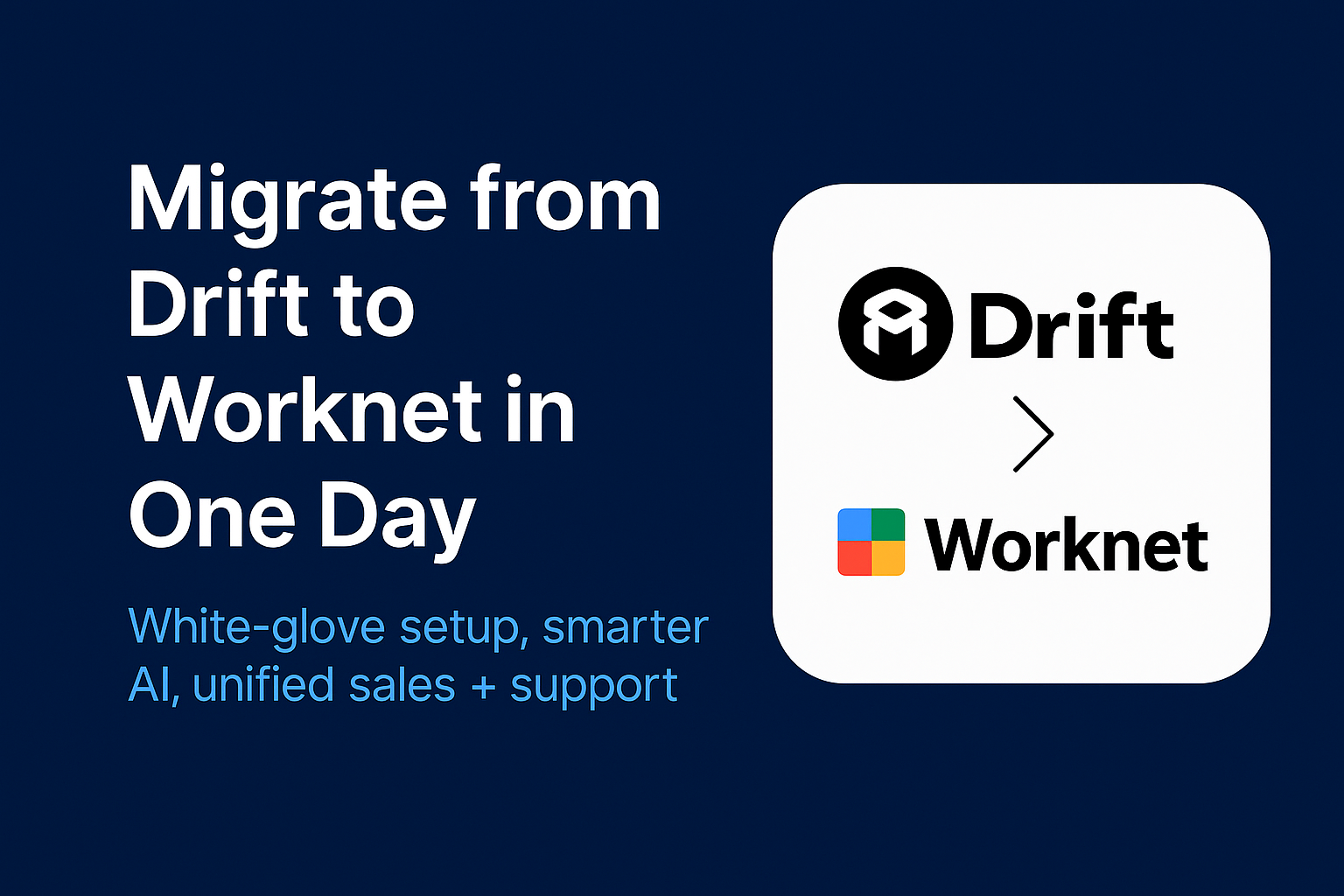8 Lead Scoring Best Practices for SaaS in 2025
In the competitive SaaS landscape, simply collecting leads isn't enough. The real challenge lies in identifying which ones are genuinely ready to buy. Many companies implement lead scoring with high hopes, only to see it become a source of friction between sales and marketing. Generic models, outdated criteria, and a lack of alignment lead to missed opportunities and wasted effort. Your system might be flagging low-quality leads or, even worse, ignoring high-potential prospects who don't fit a rigid profile.
This article cuts through the noise. We will explore eight advanced lead scoring best practices designed specifically for modern SaaS companies. You'll learn how to move beyond simple demographic points and leverage dynamic behavioral data, AI-driven insights, and strategic alignment to build a scoring system that not only qualifies leads but actively accelerates your sales cycle.
We will also show how AI-powered chat captures crucial behavioral data points, feeding your scoring model with real-time intent signals directly from user interactions. By implementing these strategies, you can transform your lead scoring from a passive filter into an active, intelligent engine for revenue growth, ensuring your sales team focuses only on the most promising opportunities.
1. Implement Progressive Lead Scoring
Progressive lead scoring is a dynamic approach that builds a lead's score incrementally over time. Instead of assigning a static score based on limited initial information, this method acknowledges that lead qualification is an evolving journey. As a lead interacts more with your brand, you gather additional data points that create a richer, more accurate profile, allowing for a more precise score.
This method avoids the pitfalls of making premature judgments. A lead who initially seems low-quality might become a hot prospect after engaging with specific content, attending a webinar, or interacting with an AI chatbot. This is a foundational element of modern lead scoring best practices, as it adapts to the customer's journey.
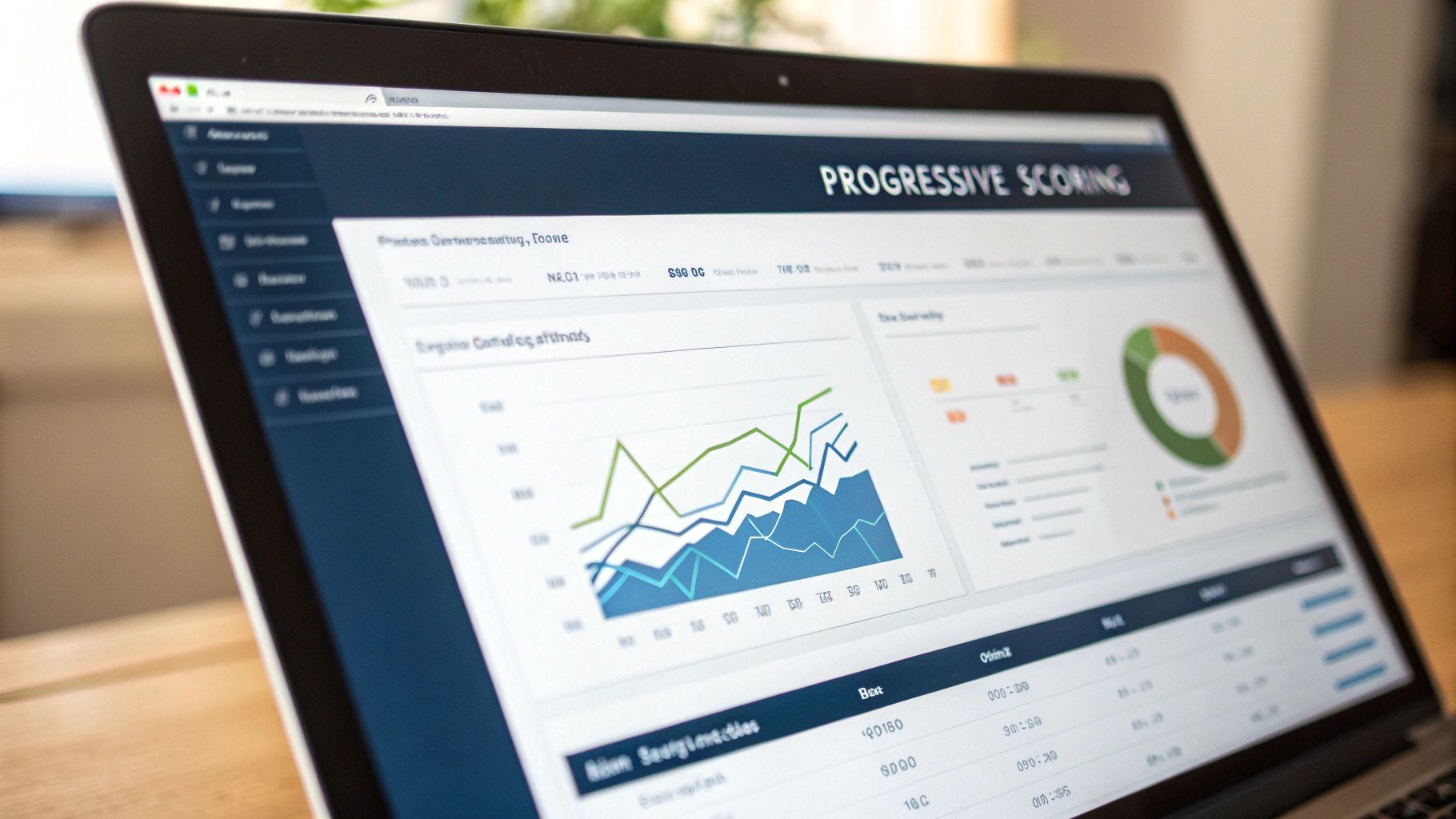
How to Implement Progressive Scoring
Platforms like HubSpot and Salesforce Pardot excel at this by updating scores based on a continuous stream of engagement signals. This can include email opens, content downloads, and specific website behaviors. For instance, a lead who only provides an email at first might have a low score. However, that score increases when they later download an ebook, revealing their job title and company size.
Key Insight: Progressive scoring treats qualification not as a single event, but as an ongoing conversation. Each interaction is a new piece of the puzzle, providing a clearer picture of intent and fit.
To effectively implement this strategy, you must strategically collect information over time. This process often starts with well-designed lead capture forms that use progressive profiling to ask for new information with each subsequent submission, preventing user fatigue.
Actionable implementation steps include:
- Start with foundational data: Begin by scoring based on basic demographic and firmographic information collected initially.
- Layer behavioral data: Set up automated workflows to track and score actions like page visits, pricing page views, and demo requests.
- Use progressive profiling: Configure your forms to ask for different information on each visit, gradually building a complete lead profile. For example, the first form asks for an email, the second for company name, and the third for job title.
- Regularly review criteria: Analyze which behaviors and attributes correlate most strongly with conversions and adjust your scoring rules accordingly. This ensures your model remains accurate and effective.
By adopting a progressive approach, your team can focus its efforts on leads who demonstrate sustained and meaningful interest, leading to more efficient sales cycles and higher conversion rates. To see how this fits into a broader strategy, discover more about lead generation best practices for SaaS.
2. Align Sales and Marketing on Lead Definitions
One of the most critical yet often overlooked lead scoring best practices is achieving complete alignment between sales and marketing teams on lead definitions. Without a shared understanding of what constitutes a "qualified" lead, the entire scoring system becomes a source of friction rather than a tool for growth. This practice establishes a unified framework, ensuring that when marketing hands off a lead, sales agrees it's ready for engagement.
This alignment prevents the common scenario where marketing celebrates a high volume of Marketing Qualified Leads (MQLs) while the sales team complains about poor lead quality. Companies like Adobe have seen a 30% improvement in sales acceptance rates simply by implementing shared lead definitions and creating a cohesive handoff process.

How to Align Your Teams
Achieving this synergy requires creating clear, documented criteria for both MQLs and Sales Qualified Leads (SQLs). Popularized by industry leaders like Marketo and HubSpot, this involves collaborative sessions where both teams agree on the specific demographic, firmographic, and behavioral signals that indicate sales-readiness. For example, a lead with a specific job title from a target industry who has visited the pricing page twice might officially become an MQL.
Key Insight: Lead scoring is not just a marketing metric; it is a pact between sales and marketing. When both teams co-author the rules, they share ownership of the outcome, leading to mutual trust and accountability.
To implement this effectively, you must establish formal processes and feedback loops. This ensures the definitions evolve with market changes and campaign performance. The goal is to create a living document, not a one-time agreement set in stone.
Actionable implementation steps include:
- Create a Service Level Agreement (SLA): Formally document the agreed-upon definitions for MQLs and SQLs, including the specific criteria and score thresholds. This agreement should also outline the expected follow-up actions from sales.
- Hold Regular Alignment Meetings: Schedule bi-weekly or monthly meetings between sales and marketing leaders to review lead quality, discuss conversion rates, and refine scoring criteria based on real-world results.
- Build Shared Dashboards: Use your CRM to create dashboards that track lead lifecycle stages, conversion rates, and the percentage of MQLs accepted by sales. This provides a single source of truth for both teams. You can see how to implement this by learning about Salesforce best practices on worknet.ai.
- Establish a Feedback Mechanism: Implement a simple process within your CRM for sales reps to provide direct feedback on lead quality, allowing for continuous, data-driven improvement of your scoring model.
3. Use Behavioral Scoring with Recency and Frequency
Behavioral scoring focuses on what a lead does, not just who they are. This approach scores leads based on their actual behaviors and engagement levels, with a strong emphasis on how recently and frequently they've taken specific actions. It correctly recognizes that recent, repeated behaviors are much stronger indicators of purchase intent than one-time or outdated activities.
This dynamic method ensures sales teams engage with leads at the peak of their interest. A prospect who visited your pricing page three times in the last 24 hours is far more valuable than one who downloaded a whitepaper six months ago and has been inactive since. This is a crucial component of effective lead scoring best practices because it prioritizes active, engaged buyers.
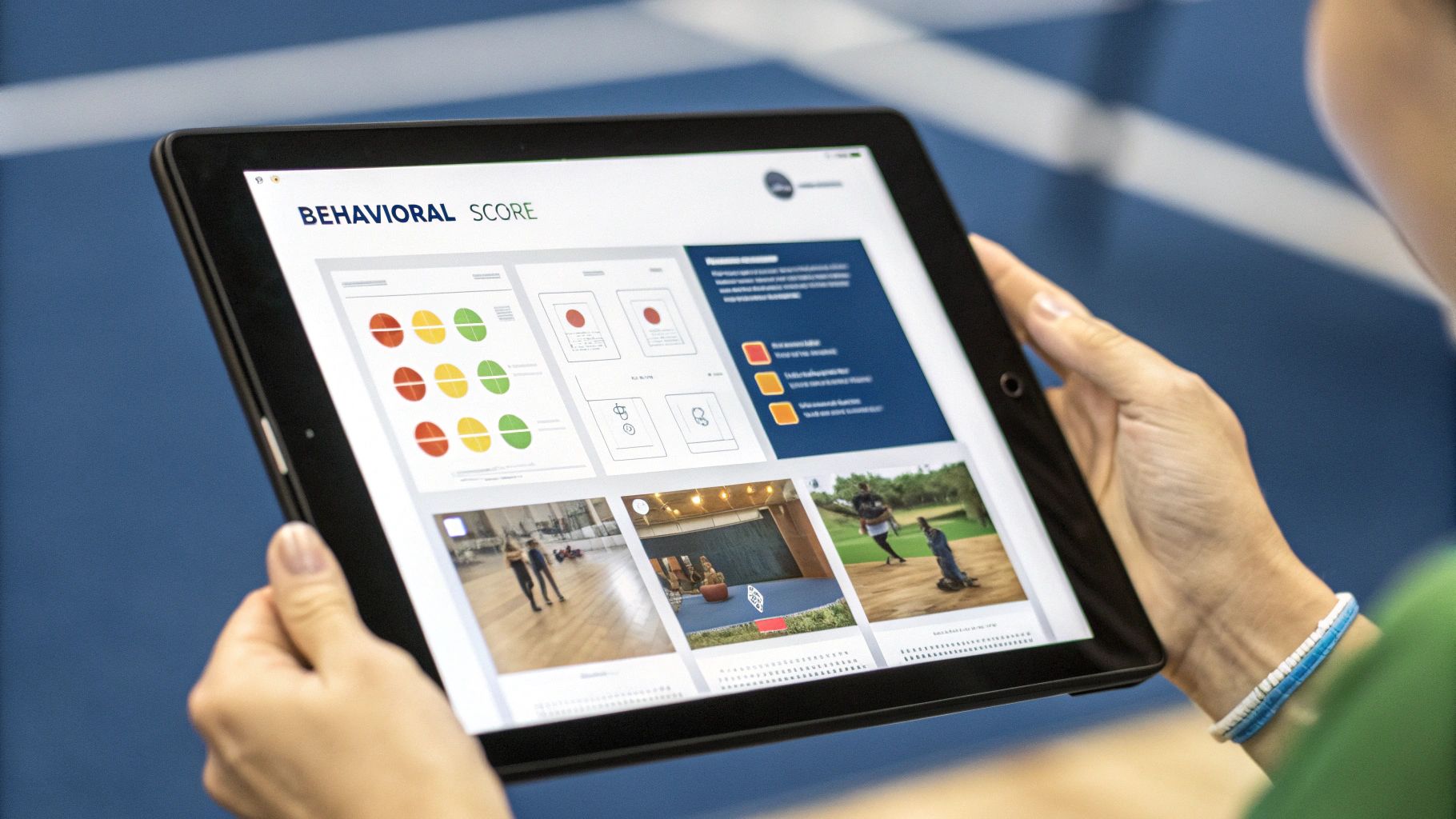
How to Implement Behavioral Scoring
Marketing automation platforms like Marketo and Pardot popularized this model, allowing you to assign points for actions and implement score decay for inactivity. For instance, Drift's system increases scores for recent chat engagements and product page visits, while Intercom scores leads based on feature usage frequency within the app.
Key Insight: A lead's behavior is a direct signal of their current intent. Prioritizing recency and frequency allows you to capture this intent at the most opportune moment, dramatically increasing the chances of a successful sales conversation.
To effectively implement behavioral scoring, it's crucial to understand what constitutes true engagement and identify key metrics like the 13 Intent Signals To Find High Intent Leads that indicate high potential. This understanding helps you assign appropriate weights to different actions.
Actionable implementation steps include:
- Weight recent activities: Assign higher point values to actions taken within the last 7-30 days. For example, a webinar attendance today might be worth +15 points, while one from 90 days ago is only worth +5.
- Set up high-intent triggers: Immediately increase a lead's score for high-value actions like visiting the pricing page, requesting a demo, or starting a free trial.
- Use negative scoring: Implement score decay by subtracting points for prolonged periods of inactivity, such as no website visits or email opens in 60 days. This keeps your pipeline clean and focused.
- Track micro-behaviors: Monitor subtle but important signals like time spent on key pages, video view duration, or repeated visits to a specific feature page. Interactions like these are also central to a successful conversational marketing strategy.
By focusing on recent and frequent behaviors, your sales team can confidently prioritize leads who are actively considering a purchase, resulting in a more efficient sales process and higher conversion rates.
4. Implement Negative Scoring for Disqualifying Factors
While positive scoring builds a case for a lead’s potential, negative scoring is equally crucial for filtering out poor fits. This practice involves systematically reducing a lead's score based on specific attributes or behaviors that indicate they are unlikely to become a customer. This disqualification process is a core component of effective lead scoring best practices, ensuring your sales team doesn't waste time on dead-end prospects.
By subtracting points for disqualifying factors, you create a more accurate and reliable scoring system. For instance, leads who list a personal email domain like Gmail or Yahoo, identify as a student, or work for a competitor are often poor fits for B2B SaaS products. Negative scoring automatically deprioritizes them, allowing high-potential leads to rise to the top.
How to Implement Negative Scoring
Platforms like Salesforce and Marketo allow you to create rules that subtract points from a lead's score when certain criteria are met. A lead from a non-target industry or a company with only one employee might receive a score deduction, pushing them further down the queue. Zoom, for example, might negatively score leads who sign up with a known competitor’s email domain.
Key Insight: Negative scoring acts as an automated gatekeeper. It protects your sales team's most valuable asset—their time—by proactively identifying and filtering out leads that do not align with your Ideal Customer Profile (ICP).
To implement this effectively, you must have a crystal-clear understanding of your anti-personas—the types of individuals or organizations you do not want to sell to. This clarity comes from analyzing historical data on deals that were lost or customers who churned quickly.
Actionable implementation steps include:
- Identify disqualifying factors: Analyze past sales data to pinpoint common traits of unqualified leads. This could include specific job titles (e.g., "intern," "student"), industries, or company sizes outside your target market.
- Assign negative point values: Determine how much each negative factor should impact a lead's score. A competitor might get a -50, while a free email provider gets a -10.
- Automate score deductions: Set up workflows in your marketing automation platform to automatically subtract points when these disqualifying factors are identified through form submissions or data enrichment.
- Review and refine regularly: Meet with your sales and marketing teams quarterly to review the effectiveness of your negative scoring criteria. Remove rules that are too aggressive and add new ones based on emerging trends in your lead data.
Integrating negative scoring ensures your lead qualification model is balanced and realistic. It sharpens your focus on genuine opportunities, leading to a more efficient sales funnel and higher-quality conversions.
5. Create Industry and Persona-Specific Scoring Models
A one-size-fits-all lead scoring model often fails because different audiences have unique buying signals and qualification criteria. Creating industry and persona-specific scoring models is a sophisticated strategy that tailors your qualification process to the distinct characteristics of each market segment. This recognizes that what makes a great lead in one sector may not apply in another.
This targeted approach acknowledges that buying journeys vary significantly. For instance, an enterprise CIO from the financial sector will engage with different content and exhibit different behaviors than a marketing manager at a tech startup. By building separate models, you can apply more relevant and accurate scoring, which is a cornerstone of advanced lead scoring best practices.
How to Implement Persona-Specific Scoring
Platforms like Salesforce and Marketo allow for the creation of multiple, parallel scoring models that can be assigned to leads based on specific attributes like industry, company size, or job title. For example, Microsoft famously uses different qualification criteria for its enterprise clients versus its small and medium-sized business (SMB) customers, as their sales cycles and decision-making processes are vastly different.
Key Insight: Segmented scoring models transform lead qualification from a generic filter into a precision tool. They empower you to speak your prospect's language by valuing the specific actions and attributes that matter most to their unique context.
To implement this effectively, you must first define your key segments and then analyze their historical conversion data. Identify the unique firmographic and behavioral patterns that correlate with successful deals within each segment. This data-driven approach ensures your models are built on proven success indicators rather than assumptions.
Actionable implementation steps include:
- Identify Core Segments: Start by defining 2-3 of your most valuable and distinct customer segments or buyer personas.
- Analyze Historical Data: For each segment, review past conversions to pinpoint which attributes (e.g., job titles, content downloads, webinar attendance) had the highest correlation with closed-won deals.
- Build Separate Models: Create a unique scoring model for each segment, assigning different point values to actions and attributes based on your analysis. For example, a "case study download" might be worth 15 points for an enterprise persona but only 5 for an SMB persona.
- Educate Your Sales Team: Ensure sales representatives understand the nuances of each scoring model. They need to know why a lead from one segment has a different score than a lead from another, even with similar engagement levels.
By customizing your scoring, you align your marketing and sales efforts more closely with the specific needs and behaviors of your target audiences, resulting in more accurate qualification and higher-quality MQLs.
6. Establish Lead Score Decay and Lifecycle Management
A lead's score should not be permanent. Lead score decay is the practice of systematically reducing a lead's score over time when they become inactive. This process, combined with comprehensive lifecycle management, ensures your scoring model remains relevant and accurately reflects a lead's current level of interest and position in the buyer's journey.
Without decay, a lead who was highly engaged six months ago but has since gone cold would still appear as a hot prospect. This creates noise for your sales team, wastes resources, and skews your conversion data. Implementing score decay is one of the most critical lead scoring best practices for maintaining a clean and actionable pipeline, ensuring sales focuses only on currently engaged prospects.
The infographic below illustrates a common model for lead score decay based on periods of inactivity.
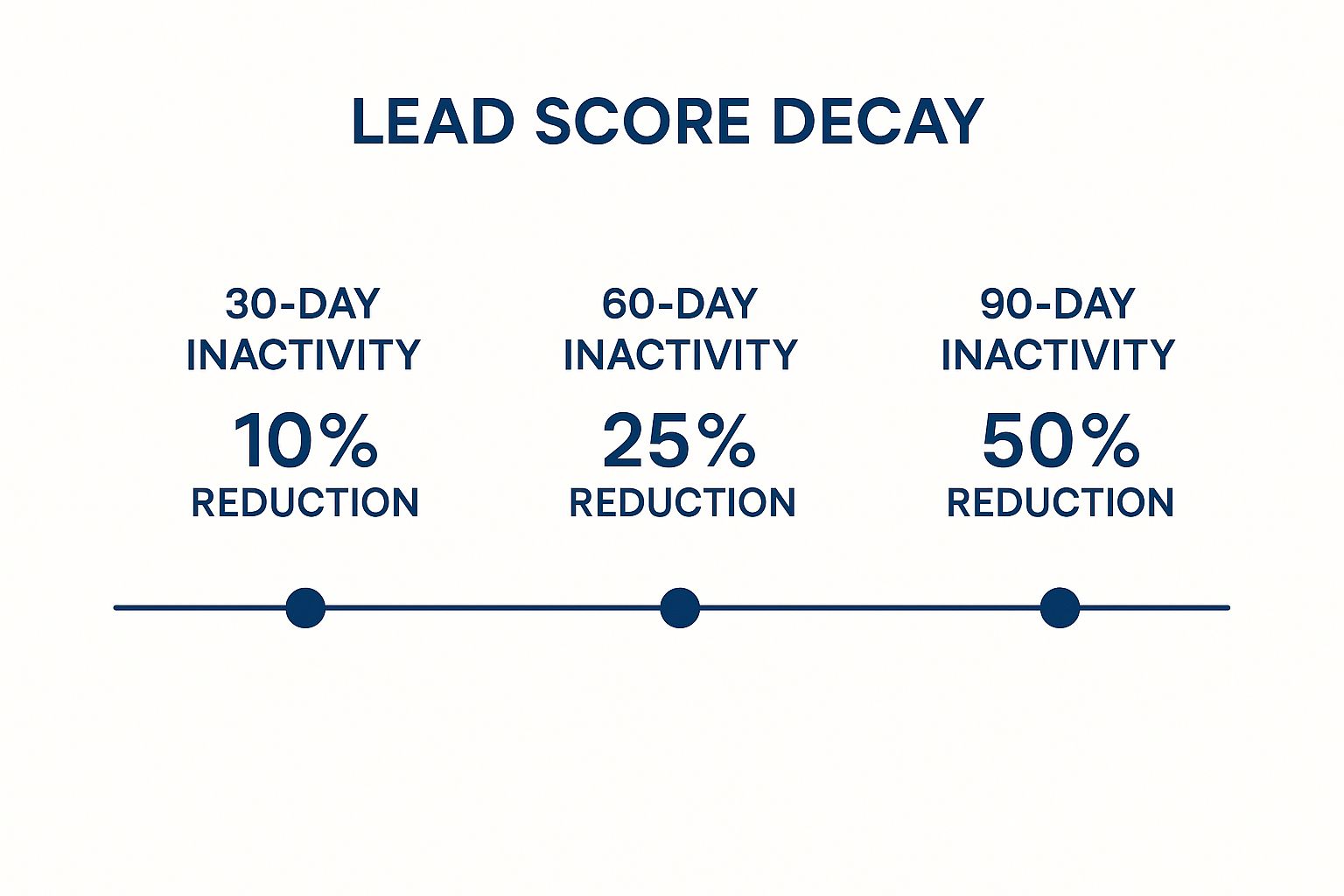
This timeline demonstrates how a lead's score can be automatically reduced, ensuring that only actively engaged leads retain high scores.
How to Implement Score Decay and Lifecycle Management
Marketing automation platforms like Oracle Eloqua and Salesforce Pardot are well-equipped to handle this. You can configure rules that automatically deduct points after a certain period of inactivity, such as no website visits, email clicks, or content downloads in 30 days. Similarly, lifecycle stages (e.g., Lead, MQL, SQL, Customer) can be used to adjust scoring criteria. For example, once a lead becomes a customer, their lead score might be reset or archived.
Key Insight: Score decay is not about discarding leads; it's about re-prioritizing them. A decayed score is a trigger to either move a lead to a nurturing campaign or archive them, keeping the active pipeline pure.
Properly managing the lead lifecycle ensures your team's efforts align with the lead's current status and prevents them from pursuing disengaged contacts.
Actionable implementation steps include:
- Define inactivity triggers: Determine what constitutes inactivity for your business. This is typically a lack of any trackable engagement for a set period.
- Set decay rates: Establish rules for score reduction. For instance, decrease the score by 10% after 30 days of inactivity and by 25% after 60 days. Align these rates with your typical sales cycle length.
- Create re-engagement workflows: When a lead's score drops to a certain threshold, automatically enroll them in a re-engagement email sequence to try and win them back.
- Align scores with lifecycle stages: Adjust scoring rules as leads move through the funnel. A lead in the "SQL" stage should be scored differently than a new "Lead" to reflect their advanced qualification.
7. Leverage Predictive Lead Scoring with Machine Learning
Predictive lead scoring is an advanced approach that uses artificial intelligence and machine learning algorithms to analyze historical data and identify patterns that forecast a lead's conversion probability. This method moves beyond traditional, manually configured rules to uncover hidden correlations and continuously improve scoring accuracy over time. It's a cornerstone of modern lead scoring best practices for forward-thinking teams.
Instead of relying solely on explicit actions like an ebook download, predictive models analyze thousands of subtle data points, from firmographics to nuanced behavioral signals. This allows them to identify which combinations of attributes and actions truly indicate a high-quality, sales-ready lead, often discovering insights that human analysis would miss.
How to Implement Predictive Scoring
Platforms like Salesforce Einstein Lead Scoring and Marketo’s Predictive Audiences are designed to handle this complexity, using machine learning to prioritize leads automatically. These tools analyze your historical sales data, including both won and lost opportunities, to build a custom model that understands what a successful lead looks like for your specific business. For instance, InsightSquared's predictive scoring helped its customers improve conversion rates by 35%.
Key Insight: Predictive scoring shifts the focus from "what has this lead done?" to "how likely is this lead to convert based on patterns from thousands of past interactions?" It's about probability, not just points.
To truly master this technique, it's essential to understand the underlying principles of how AI can predict customer behavior, which allows for more dynamic and accurate lead qualification models.
Actionable implementation steps include:
- Ensure data readiness: You need a sufficient dataset for the model to learn effectively. A common benchmark is to have at least 1,000 converted leads and an equivalent number of disqualified leads for robust model training.
- Combine with traditional scoring: Start by using the predictive score alongside your existing rule-based model. This provides transparency and helps your sales team build trust in the new system's recommendations.
- Validate model performance: Regularly check the model's predictions against actual sales outcomes. If you see a drift in accuracy, it may be time to retrain the model with fresh data.
- Start with a pilot program: Roll out predictive scoring to a small, controlled group of sales reps first. Use their feedback to refine the process and demonstrate its value before a company-wide implementation.
By leveraging predictive analytics, your organization can achieve a more accurate, automated, and efficient lead scoring process that directly impacts your sales pipeline and revenue growth.
8. Implement Regular Lead Scoring Audits and Optimization
A lead scoring model is not a "set it and forget it" tool. It requires regular audits and optimization to maintain its accuracy and effectiveness. This practice involves systematically reviewing your scoring model's performance against actual sales outcomes to ensure it remains aligned with evolving business objectives and market dynamics. Without this crucial step, even the most well-designed system will degrade over time.
This disciplined approach ensures your scoring criteria reflect what truly indicates a sales-ready lead. For instance, a high-value content asset from last year might no longer signal strong intent, or a new product feature might introduce new, highly predictive user behaviors. Regular audits are a cornerstone of advanced lead scoring best practices because they keep your sales and marketing teams synchronized and focused on genuine opportunities.
How to Implement Audits and Optimization
Leading companies treat their lead scoring models like a product that needs continuous improvement. Zendesk, for example, systematically A/B tests its scoring criteria to optimize how it identifies sales-qualified leads, ensuring a higher quality pipeline. Similarly, LinkedIn reportedly used quarterly reviews to refine its model, resulting in a significant uplift in MQL-to-SQL conversion rates.
Key Insight: Your lead scoring model is a living system. Regular audits transform it from a static rule-set into a dynamic intelligence engine that adapts to changes in customer behavior and business strategy.
To implement this effectively, you must establish a consistent review cadence, whether quarterly or biannually, involving both sales and marketing stakeholders. This collaborative process ensures the model reflects real-world feedback from the front lines.
Actionable implementation steps include:
- Track key performance metrics: Continuously monitor MQL-to-SQL conversion rates, sales cycle length, and the conversion rates of leads at different score thresholds.
- Interview sales reps: Schedule regular sessions with the sales team to gather qualitative feedback on lead quality. Ask them which leads are converting and which are falling flat.
- Analyze false positives/negatives: Dig into leads that were scored high but didn't convert (false positives) and those that were scored low but became customers (false negatives). These outliers hold valuable lessons.
- Document all changes: Maintain a log of every adjustment made to the scoring model, the rationale behind the change, and its impact on performance. This creates a historical record for future reference and learning.
By committing to a regular audit cycle, you ensure your lead scoring system remains a powerful, reliable asset that drives efficient growth and prevents your sales team from wasting time on misqualified leads.
Lead Scoring Best Practices Comparison
From Theory to Action: Building Your High-Performance Scoring Engine
We’ve explored the essential pillars of modern lead qualification, moving beyond basic demographic filters to embrace a more dynamic, intelligent system. Implementing these lead scoring best practices is not about checking boxes; it's about fundamentally re-architecting how your marketing and sales teams identify and pursue revenue opportunities. The journey from a rudimentary point system to a high-performance scoring engine is built on a commitment to continuous improvement and strategic alignment.
The most critical takeaway is that effective lead scoring is never static. It is a living system that breathes with the rhythm of your market and the behavior of your prospects. Your model must evolve, incorporating negative scoring to weed out poor fits, deploying score decay to maintain a fresh and relevant pipeline, and leveraging multiple, persona-specific models to recognize the nuanced buying signals across different segments. This prevents the "set it and forget it" mentality that renders so many scoring systems obsolete within months.
Your Actionable Roadmap to Smarter Scoring
Transforming your approach requires a clear plan. Instead of attempting to overhaul your entire system at once, focus on incremental, high-impact changes. Here is a practical roadmap to get you started:
- Immediate Audit: Begin by conducting a thorough audit of your existing lead scoring model, or lack thereof. Benchmark your current process against the eight best practices discussed in this article. Identify the most significant gaps. Is your sales and marketing alignment weak? Are you failing to account for behavioral recency?
- Prioritize a Single Initiative: Select one or two practices to implement first. A powerful starting point is the alignment between sales and marketing on a unified "Marketing Qualified Lead" (MQL) definition. This foundational step ensures everyone is working toward the same goal and provides the criteria needed to build a meaningful scoring model.
- Integrate Richer Data Sources: Simultaneously, focus on capturing more granular behavioral data. This is where AI-driven chat and real-time engagement signals become invaluable. Look at the specific questions leads ask, the features they explore on your site, and the content they engage with. This rich, intent-driven data is the fuel for a truly predictive model.
- Establish a Review Cadence: Commit to a regular review cycle, ideally quarterly. Use this time to analyze conversion rates for different score thresholds, gather feedback from the sales team on lead quality, and refine your point values. This iterative process is what separates top-performing organizations from the rest.
By embracing these lead scoring best practices, you empower your team to stop chasing every lead and start cultivating the right relationships. The result is a more efficient sales cycle, higher conversion rates, and a predictable engine for sustainable growth. Your scoring model becomes more than a filter; it becomes a strategic asset that anticipates customer needs and drives revenue.
Ready to power your lead scoring with real-time, AI-driven conversational insights? Worknet.ai Inc captures the invaluable data from your website chat interactions, providing the deep behavioral signals needed to build a truly predictive and accurate lead scoring model. See how our platform can help you identify your best leads faster by visiting Worknet.ai Inc to learn more.
FAQs
.png)
Lorem ipsum dolor sit amet, consectetur adipiscing elit. Suspendisse varius enim in eros elementum tristique. Duis cursus, mi quis viverra ornare, eros dolor interdum nulla, ut commodo diam libero vitae erat. Aenean faucibus nibh et justo cursus id rutrum lorem imperdiet. Nunc ut sem vitae risus tristique posuere.
Lorem ipsum dolor sit amet, consectetur adipiscing elit. Suspendisse varius enim in eros elementum tristique. Duis cursus, mi quis viverra ornare, eros dolor interdum nulla, ut commodo diam libero vitae erat. Aenean faucibus nibh et justo cursus id rutrum lorem imperdiet. Nunc ut sem vitae risus tristique posuere.
Lorem ipsum dolor sit amet, consectetur adipiscing elit. Suspendisse varius enim in eros elementum tristique. Duis cursus, mi quis viverra ornare, eros dolor interdum nulla, ut commodo diam libero vitae erat. Aenean faucibus nibh et justo cursus id rutrum lorem imperdiet. Nunc ut sem vitae risus tristique posuere.
Lorem ipsum dolor sit amet, consectetur adipiscing elit. Suspendisse varius enim in eros elementum tristique. Duis cursus, mi quis viverra ornare, eros dolor interdum nulla, ut commodo diam libero vitae erat. Aenean faucibus nibh et justo cursus id rutrum lorem imperdiet. Nunc ut sem vitae risus tristique posuere.
Lorem ipsum dolor sit amet, consectetur adipiscing elit. Suspendisse varius enim in eros elementum tristique. Duis cursus, mi quis viverra ornare, eros dolor interdum nulla, ut commodo diam libero vitae erat. Aenean faucibus nibh et justo cursus id rutrum lorem imperdiet. Nunc ut sem vitae risus tristique posuere.
Lorem ipsum dolor sit amet, consectetur adipiscing elit. Suspendisse varius enim in eros elementum tristique. Duis cursus, mi quis viverra ornare, eros dolor interdum nulla, ut commodo diam libero vitae erat. Aenean faucibus nibh et justo cursus id rutrum lorem imperdiet. Nunc ut sem vitae risus tristique posuere.
Lorem ipsum dolor sit amet, consectetur adipiscing elit. Suspendisse varius enim in eros elementum tristique. Duis cursus, mi quis viverra ornare, eros dolor interdum nulla, ut commodo diam libero vitae erat. Aenean faucibus nibh et justo cursus id rutrum lorem imperdiet. Nunc ut sem vitae risus tristique posuere.
Lorem ipsum dolor sit amet, consectetur adipiscing elit. Suspendisse varius enim in eros elementum tristique. Duis cursus, mi quis viverra ornare, eros dolor interdum nulla, ut commodo diam libero vitae erat. Aenean faucibus nibh et justo cursus id rutrum lorem imperdiet. Nunc ut sem vitae risus tristique posuere.
Lorem ipsum dolor sit amet, consectetur adipiscing elit. Suspendisse varius enim in eros elementum tristique. Duis cursus, mi quis viverra ornare, eros dolor interdum nulla, ut commodo diam libero vitae erat. Aenean faucibus nibh et justo cursus id rutrum lorem imperdiet. Nunc ut sem vitae risus tristique posuere.
Lorem ipsum dolor sit amet, consectetur adipiscing elit. Suspendisse varius enim in eros elementum tristique. Duis cursus, mi quis viverra ornare, eros dolor interdum nulla, ut commodo diam libero vitae erat. Aenean faucibus nibh et justo cursus id rutrum lorem imperdiet. Nunc ut sem vitae risus tristique posuere.

.svg)

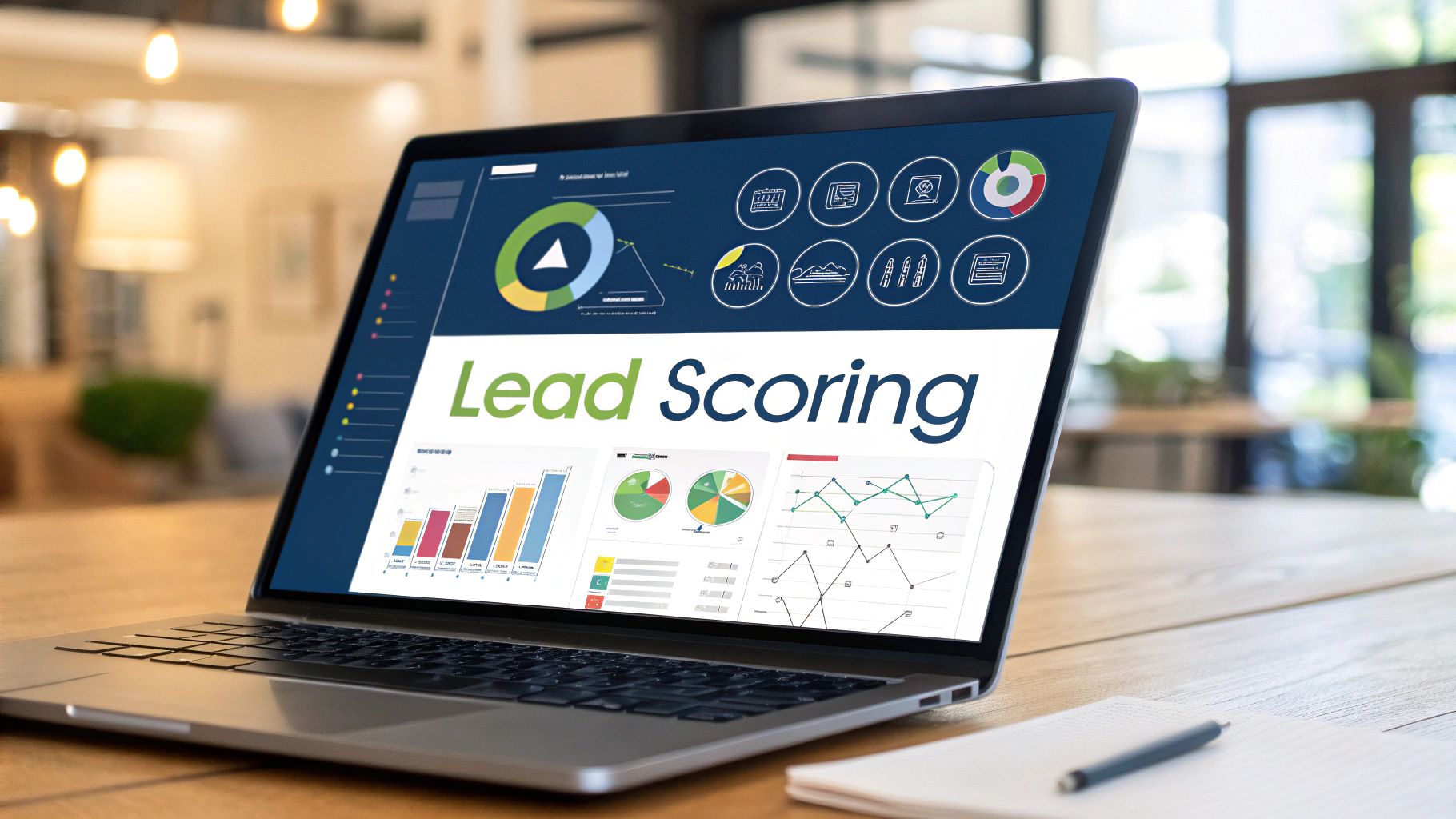
.webp)
.webp)
.webp)





